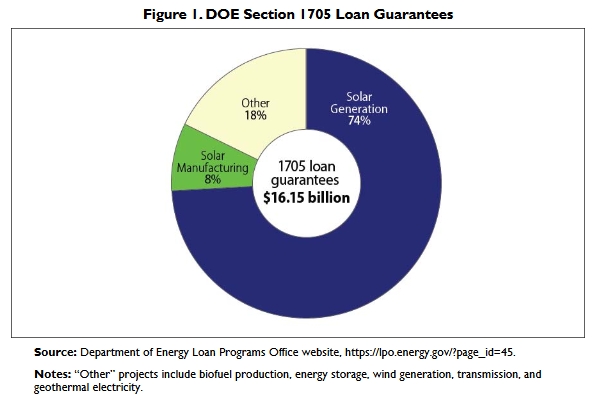
One year ago today, Reps. Fred Upton (R-Mich.) and Cliff Stearns (R-Fla.) — chairs of the House Energy Committee and Oversight Subcommittee respectively — sent a letter to Energy Secretary Steven Chu “seeking documents and information about a $535 million loan guarantee … awarded to Solyndra, Inc.”
That letter marked the beginning of an investigation that has since involved 31 more congressional letters, five congressional committee hearings, nine congressional committee staff briefings, 187,000 pages of documents from the administration, 72,000 pages of documents from Solyndra investors, testimony from five administration officials from three different departments, and a sworn committee interview with an Obama “bundler.”
What are the results of this expansive (and no doubt expensive) investigation?
Bupkis. Nothing.
The Solyndra loan appears today, as it appeared a year ago, a decision made based on merits, undone by economic shifts in the international solar market, with embarrassing political optics. There has been no evidence of wrongdoing. There is no “scandal.”
(For details on Solyndra, see here, here, here, here, here, here, here, here, [deep breath] here, here, and here. Attempts to unearth a scandal worthy to be called the “next Solyndra” have been no more fruitful: see here, here, and here.)
The wasted time and money have not daunted Upton and Stearns. They are still taking every opportunity to drop tidbits to the media about possible subpoenas, possible contempt charges, and narrowly averted subpoenas and contempt charges, working furiously to conjure the atmospherics of scandal. The media, of course, remains eager to aid them.
The investigation is no longer about wasted money or cronyism. If no damning evidence has emerged by now, the chances of it emerging in document 187,001 are remote. Instead, the investigation has become about … itself. It’s about keeping Solyndra in the news as an election-year attack on Obama. It’s about former moderates Stearns and Upton auditioning for roles in a Tea Party–dominated House. (Poor Upton, no matter how he tap dances, he just can’t seem to make the right applaud.)
The White House continues to hand over documents, even as Stearns and Upton squawk in the media about subpoenas. But how long can this circus go on? The media has given Republicans a year of overheated coverage and in exchange they’ve gotten vague hints and allegations that lead nowhere. Surely at some point they’ll get sick of being jerked around.
The DOE loan guarantee program was meant to take some risks — that’s why Congress explicitly set aside money to cover for failures — but the program as a whole wasn’t particularly risky. A Congressional Research Service report [PDF] notes:
Solar manufacturing projects might generally be considered more risky than solar generation projects because solar generation projects have contractual mechanisms (power purchase agreements, performance guarantees, service agreements, etc.) that allow these projects to manage many project financial risks.
The default risk for solar generation projects is right around zero. Here’s the breakdown of loan guarantees so far:
 A report from Bloomberg Government found that even if all the high-risk, non-generation loan guarantees failed and no assets were recovered, “DOE would still have $446 million remaining to cover additional project losses.” (Congress budgeted $2.47 billion to cover for defaults.) It also noted that Solyndra represents all of “1.7 percent of the federal government’s guarantee commitments across all agencies,” which makes the attention devoted to it disproportionate to its significance, to say the least. Needless to say, that media coverage has been abysmally biased toward hype and dark intimation.
A report from Bloomberg Government found that even if all the high-risk, non-generation loan guarantees failed and no assets were recovered, “DOE would still have $446 million remaining to cover additional project losses.” (Congress budgeted $2.47 billion to cover for defaults.) It also noted that Solyndra represents all of “1.7 percent of the federal government’s guarantee commitments across all agencies,” which makes the attention devoted to it disproportionate to its significance, to say the least. Needless to say, that media coverage has been abysmally biased toward hype and dark intimation.
A comprehensive, independent audit of the loan guarantee program managed by Herb Allison, former Treasury official and national finance chair for John McCain, found that the program is performing well, at lower costs than expected. Its main problem is that it’s understaffed; it needs more experienced investment managers. Which is ironic, since when the administration does hire cleantech investment managers, it gets knocked in the media, because guess what? Cleantech investment managers invest in the same companies that attract government investment. There are “ties” and “connections” and, oh, the media loves those. (At least it does now — not so much when oil executives were in the Oval Office.)
Now Upton and Stearns — who both have a history of supporting federal investments in cutting-edge companies, like so many other Republicans now crying crocodile tears over Solyndra — are taking the absurd stance that taxpayers “should not have been placed in the position to lose one dollar.”
That is tantamount to saying that the loan guarantee program should never have existed. But it does exist. Congress created it, and anticipated its risks. If Upton and Stearns don’t agree with that decision and don’t believe in supporting clean energy, they should campaign to elect more Republicans and kill the program. Instead, they are expressing their ideological opposition in the form of an investigation that has long since devolved into farce.



